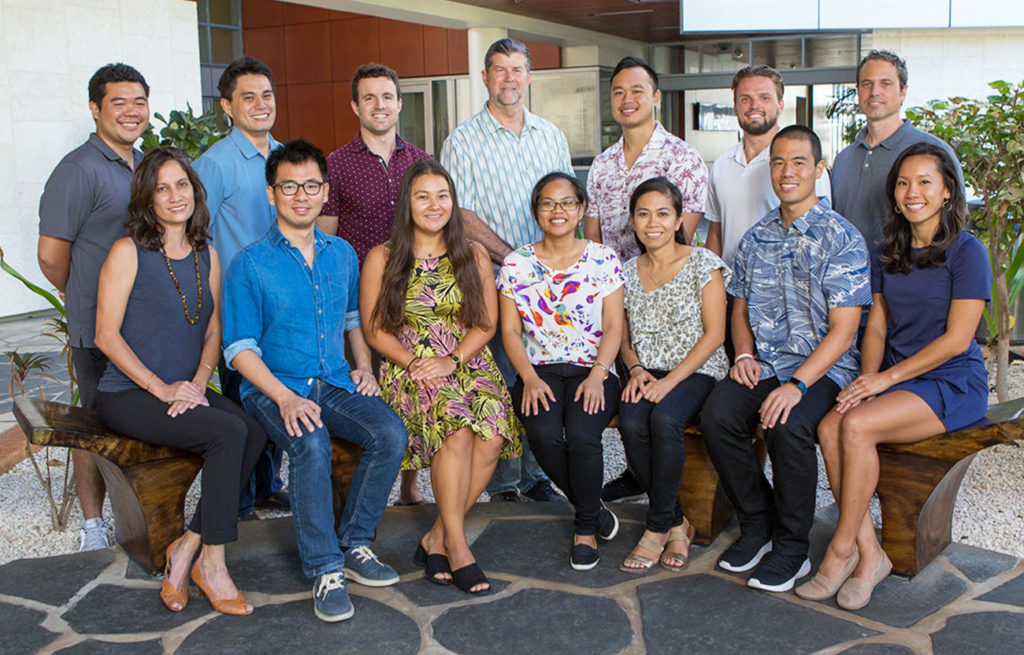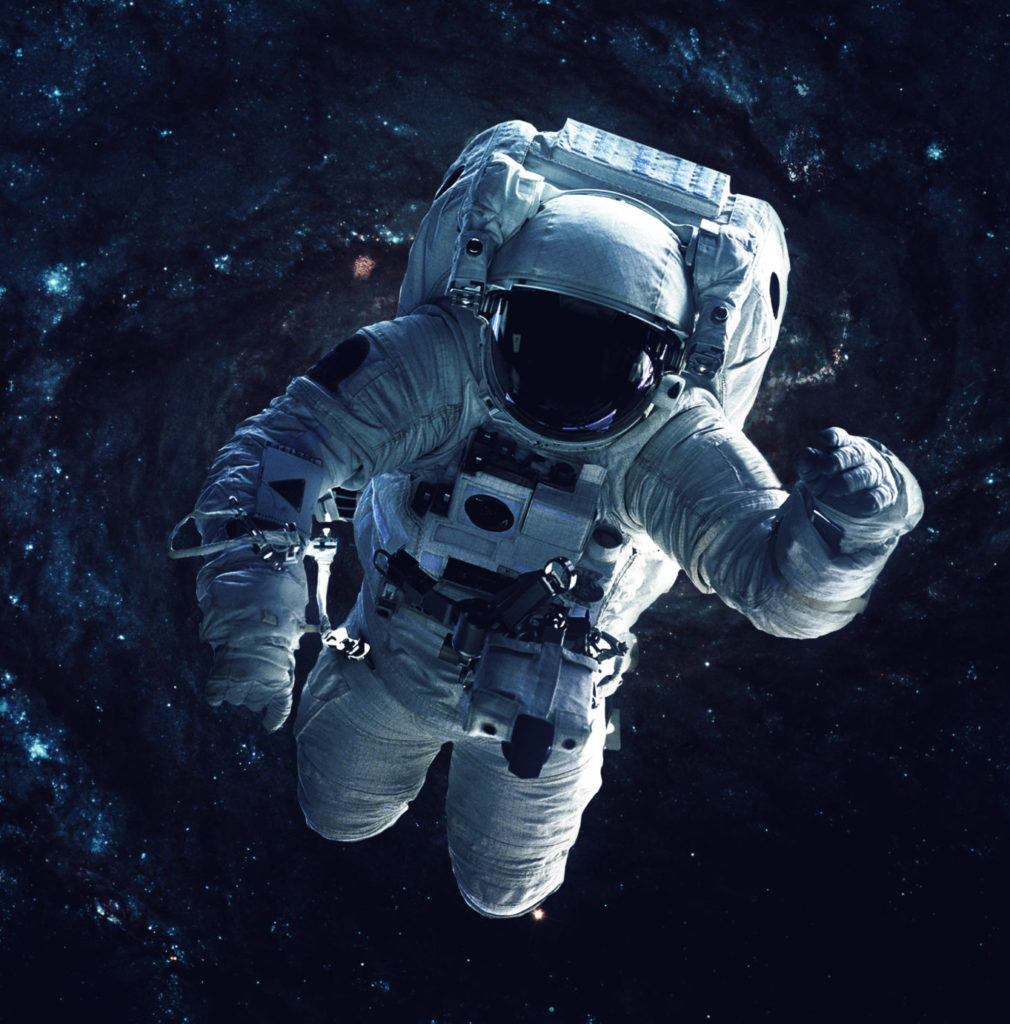“Magic Mirror on the wall, who’s the fairest of them all?” is the famous question posed by the Evil Queen to her talking mirror in Disney’s fairy tale Snow White and the Seven Dwarfs. While the vain Evil Queen may have not liked all of its replies, people may want the truth from their mirrors—as these or other devices may soon be able to accurately assess a person’s health through the image it sees.
At the forefront of this research is John Shepherd, an epidemiology researcher at the University of Hawai‘i Cancer Center (UH Cancer Center), who along with his team, are leading the development of novel tools and techniques to derive clinical health information obtained by 3D body scanners through the Shape Up! Study funded by the National Institutes of Health.

“Human body shape is an intuitive marker of health,” said Shepherd. “We envision that monitoring body shape when exercising, or changing your diet gives you more useful feedback than change in weight on a scale, and will help people be more successful with their lifestyle changes, live healthier and live longer.”
Under the study, full-body 3D optical scans of 720 adults and 720 children are being taken at high spatial resolution to explore and develop ways to measure health and body composition from the images. These technologies take a look inside areas of the human body hidden by skin and bones. Researchers will test if new imaging machines can provide useful and detailed information about various health and wellness risks.
“With these data, we can do some amazing things including modeling body shape changes due to loss or gain of muscle and fat,” said Shepherd, who serves as principal investigator of the study, that also includes the University of Washington Computer Science Department, Louisiana State University’s Pennington Biomedical Research Center and the University of California at San Francisco. “The findings from these studies will empower researchers, clinicians, and even consumers to measure and monitor their body shape and health.”
The Modern Era of Machine Learning/Artificial Intelligence (AI)
“There are strong signatures in our body shape that is related to things we’ve done in the past, how we eat, our exercise levels and also our risk factors for cancer,” said Shepherd. “What my work does is to bring that into the modern era of machine learning.”
For decades, simple metrics such as waist circumference and hip circumference have been used by the medical profession as powerful predictors of cardiovascular disease and diabetes—using a single hypothesis. Shepherd’s research takes this to the next level by incorporating machine learning to characterize how one person’s body differs from their peers in fine detail, down to the millimeter, and looks into multiple hypotheses of related cancer risks or other medical conditions associated with the variation. “That’s very different than saying I have a specific measurement for this condition or for that condition,” added Shepherd.
The research conducted by Shepherd and this team could lead to other advances in the near future, including a realistic “magic mirror” in the home. For example, by comparing images taken daily by a 3D optical scanner, it is possible for the mirror to passively detect subtle body changes like an increase in face or neck width, or even an increase in body size. If a certain established threshold is crossed, the mirror might suggest to the individual about the possible risk of high blood pressure and that their pressure should be checked through an attached cuff. The pressure reading is then tied to the observable change and catalogued for future assessments. If subsequent readings indicate that the person is on a bad pathway, either a note to contact a physician could be generated or a direct notification to a physician could be sent.

Applications of 3D Scans in Space
While Shepherd’s research is very important on terra firma, the National Aeronautics and Space Administration (NASA) is looking to harness this type of technology for its future planned missions to the Moon and eventually Mars—and they’ve turned to Shepherd and his team at the UH Cancer Center to assist.
On long-duration space flights, musculoskeletal changes primarily from acclimation to a microgravity environment can cause a loss of over 30 percent of muscle mass in less than six months. Astronauts on long-duration space flights share frailty characteristics of sarcopenia, cachexia and even osteoporosis, increasing the risk of bone fractures and loss of function—conditions that would endanger crew safety and put missions in jeopardy. The most intuitive warning sign of this functional decline is physical changes in appearance or body shape.
Due to his research expertise in body composition and shape analysis, NASA’s Translational Research Institute for Space Health awarded a grant to Shepherd’s ASTRO3DO study that was designed to measure body composition on long-duration space flights. Shepherd and this team will monitor frailty risk using 3D whole body optical scans and create a space-feasible prototype for microgravity testing.
“Because astronauts lose muscle mass from the effects of microgravity, they need to be able to have direct feedback on the quality of their muscles and bones in flight,” said Shepherd. “With the technology our team develops, we hope the astronauts can modify their nutrition and adjust their training to minimize the expected muscle loss.”
While current 3D optical scan models can accurately estimate bone and body composition on Earth, they are not acclimated for space. Due to microgravity, extracellular fluids in the body tend to redistribute around the body depending on body position leading to changes in body shape. Part of the team’s research is to monitor frailty risks using 3D scans with the necessary adjustments to compensate for the fluid redistribution.
A New Area in Cancer Research
Measurement of body composition is a relatively new area in cancer research that has direct implications for understanding how obesity and body shape contribute to the development cancer and its outcomes.
“This research is incredibly novel as it will lead to the development of new methods for measuring body composition for astronauts in space who are prone to muscle and bone loss, but it also has direct applications to cancer patients who may suffer from a similar condition called cancer cachexia,” said UH Cancer Center Director Randall Holcombe. “The research findings by Dr. Shepherd and his team may eventually be utilized to better understand and prevent cancer-related muscle wasting and improve the quality of life for cancer patients.”

